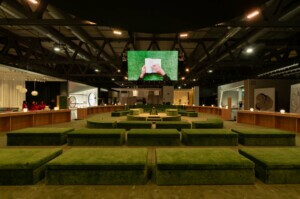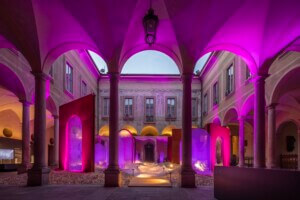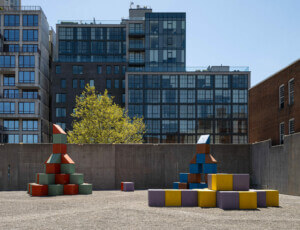On a gorgeous late afternoon in June, traffic was predictably sluggish on the elevated stretch of the Gardiner Expressway that uncouples Toronto from its waterfront. Meanwhile, directly beneath a roughly 1-mile stretch of the much-maligned municipal roadway where it skirts away from the Lake Ontario shoreline just west of Toronto’s sprawling downtown core, non-vehicular traffic was flowing beautifully.
Here—just south of the Fort York National Historic Site and east of the colossal Exhibition Place campus—nestled under an elevated section of the Gardiner, energized leashed dogs pulled their owners along a wide pathway shaded by a soaring, almost cathedral-like concrete canopy; rollerblade-booted teens zipped along a looping, 722-foot-long trail that, naturally, is converted into a hugely popular ice skating destination in the wintertime; cyclists sailed by en route to the nearby string of lakefront parks, and visitors of all ages ambled along one of the most singular urban promenades in North America. Meanwhile, ubiquitous roadside safety apparatus including traffic cones and stop signs dangled and danced overhead along a motorized conveyor belt as part of PARADE, a street-deconstructing kinetic installation designed by Mimi Lien and assembled within the five-story-high underside of the Gardiner.
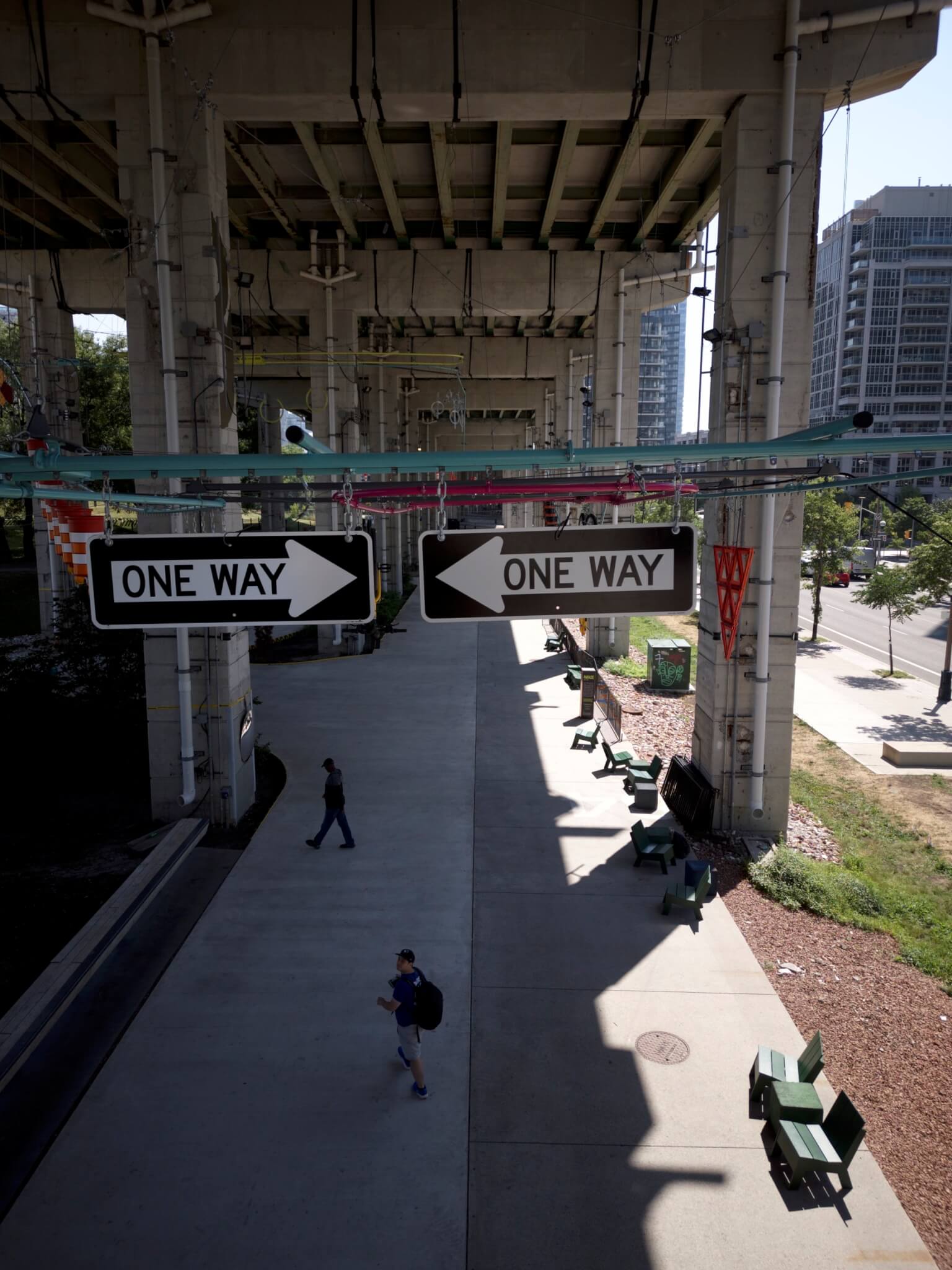
In a stark departure from the growth spurt–induced gridlock that’s come to define the work of late 1950s-era infrastructure that demarcates it, the space beneath the Gardiner Expressway adjacent to Fort York was alive with movement. Shielded from the noise and stop-and-go stresses of the elevated roadway above, the users of the remediated and reactivated space under the Gardiner, known as the Bentway, seemed completely oblivious to the slow-moving traffic ordeal directly above their heads. As they should have been.
The bustling, blissed-out scene beneath the Gardiner on that preternaturally pretty June afternoon in Toronto, however exceptional, wasn’t an entirely unusual one.
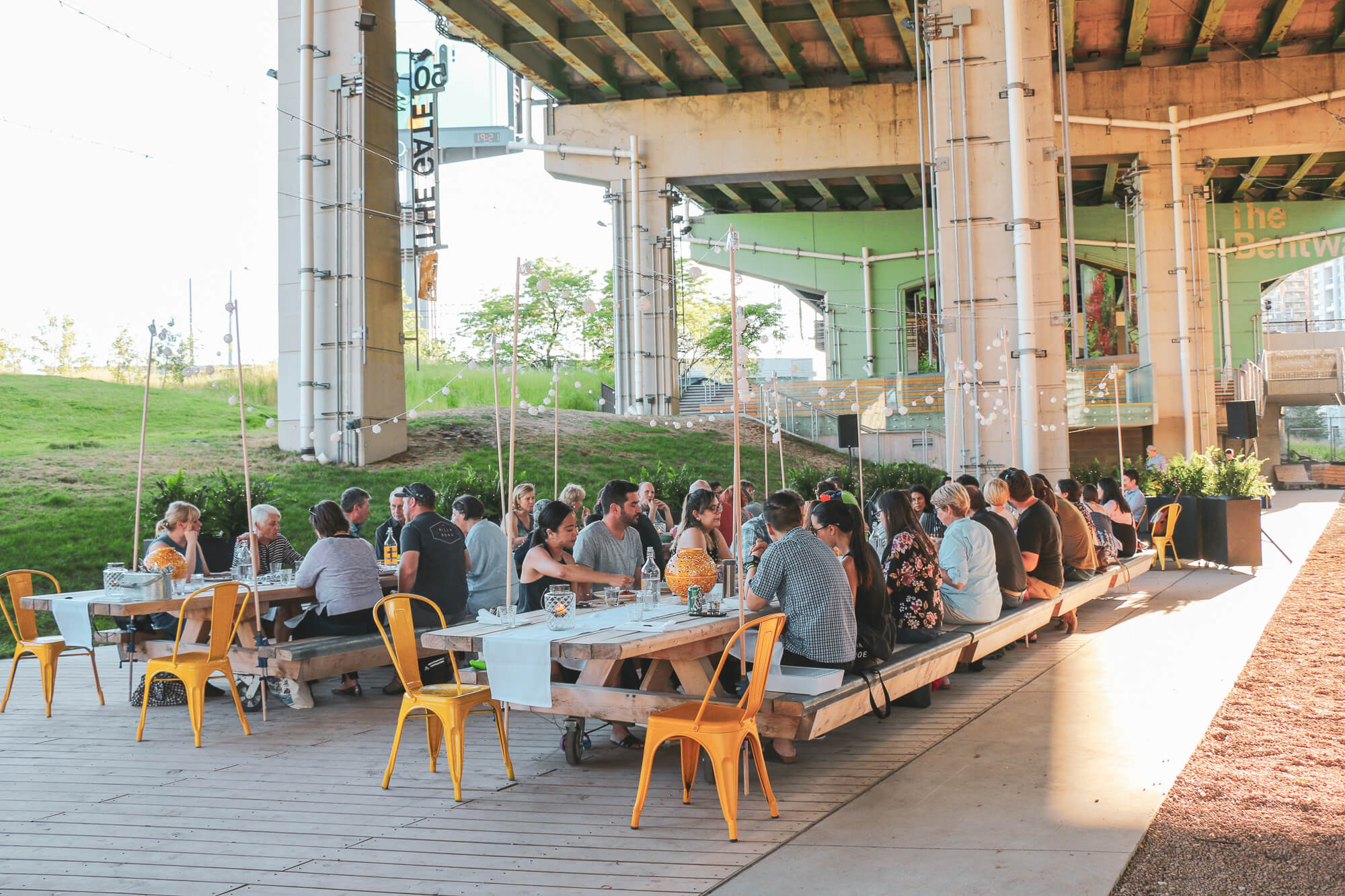
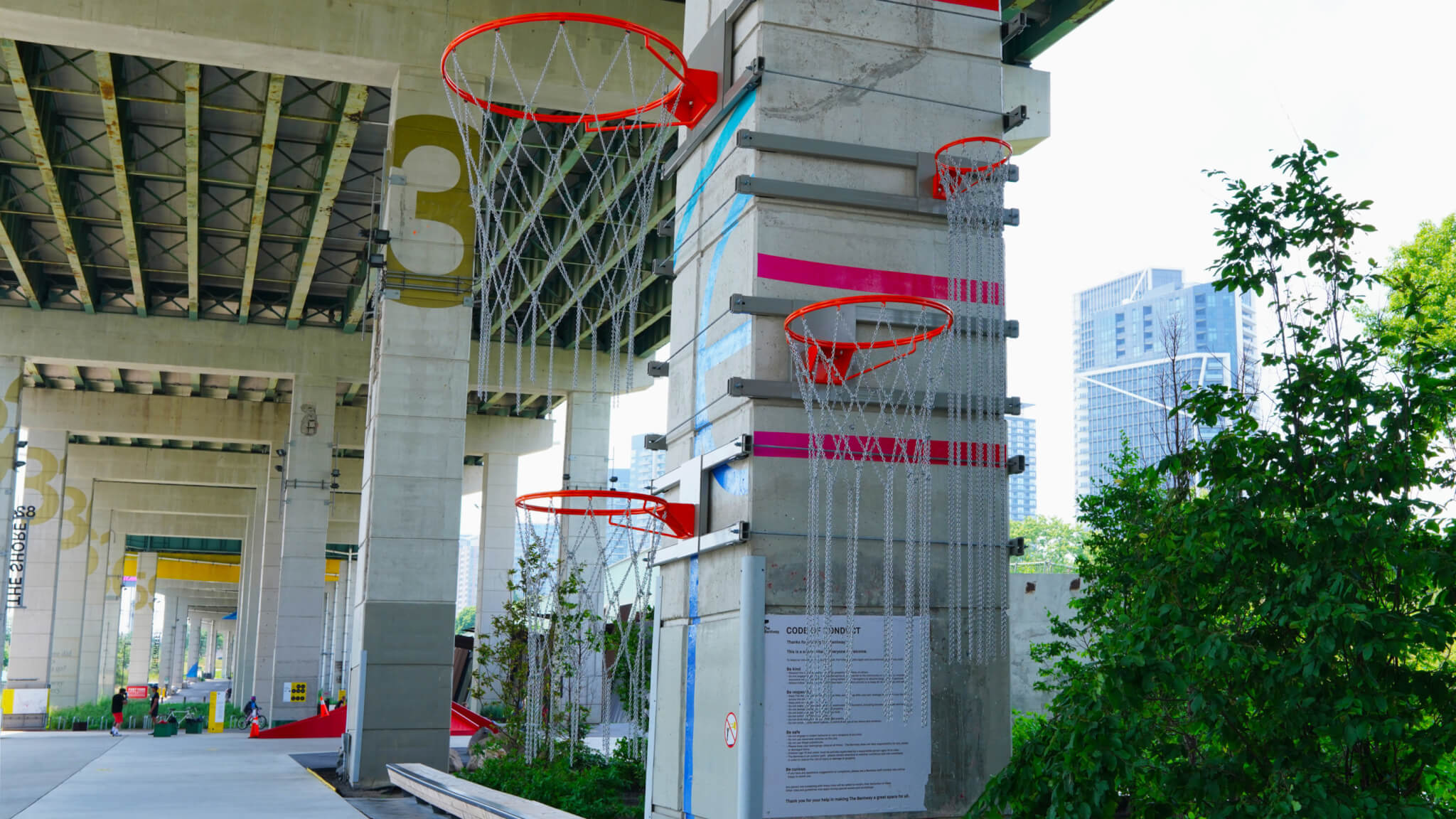
Since its early 2018 debut, this 2.5-acre linear park has been drawing Torontonians and tourists alike in droves (particularly during the pandemic) to an overlooked dead space tucked beneath an aging piece of infrastructure that, at the end of the day, would be better off buried. But because this stretch of the Gardiner won’t be torn down any time soon, the namesake nonprofit conservancy that serves as steward of the site is reimagining the space beneath it, beginning with the completed Phase 1 site between Fort York Boulevard and Strachan Avenue. (The Bentway, by the way, is named after the steel-reinforced concrete column-and-beam structures known as “bents” that support the Gardiner in its elevated section.)
A distinct “under” variation of urban greenway-slash-adaptive reuse projects a la Manhattan’s High Line, The Bentway unfolds enfilade-style beneath the Gardiner on what was previously vacant (or parking-dedicated) land. Similar to the High Line, The Bentway also boasts an impressive calendar of year-round programming including provocative public art, performances, conversations, community block parties, and more. The Miami Underline and Sabine Promenade in Houston, both fellow members of the High Line Network, work in a similar mode alongside other efforts focused on activating the voids created by elevated infrastructure projects.
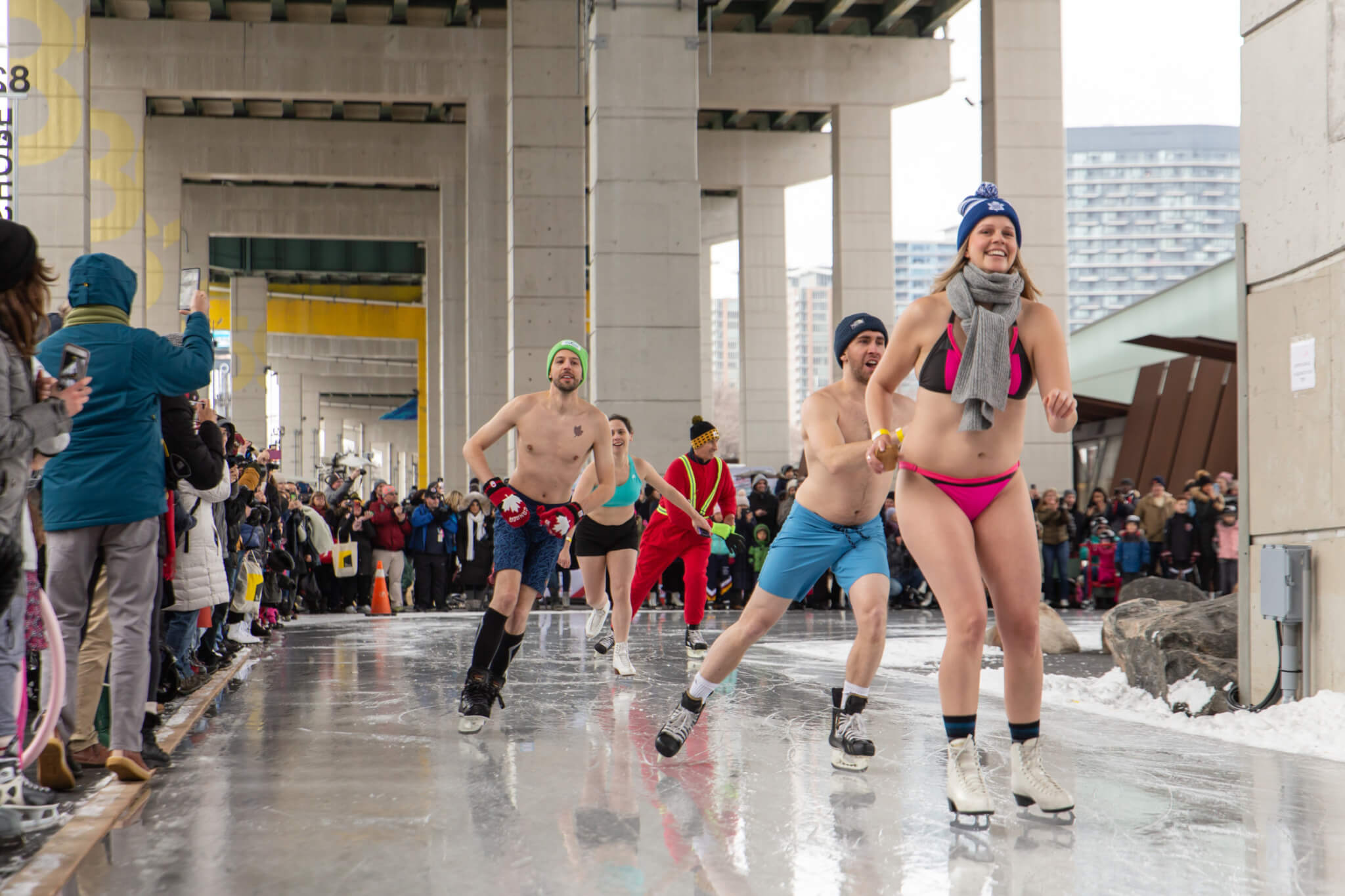
The Phase 1 Bentway site at Fort York is anchored on its western end by the Strachan Gate, a large open-air event space comprised of a landscaped amphitheater and the Timber Mezzanine, a more intimate space for performances and gatherings that doubles as the main entrance to the site. On the far east of the pedestrian pathway–laced site is a sprawling open space known as The Landing that will eventually serve as a connection point for a footbridge spanning Fort York Boulevard to be realized in Phase 2. Nestled between these two anchors is the Skate Trail that weaves between the monumental columns; during the colder months, this area of The Bentway is transformed into a full-on winter village complete with warming stations and hot beverages.
Connect 5
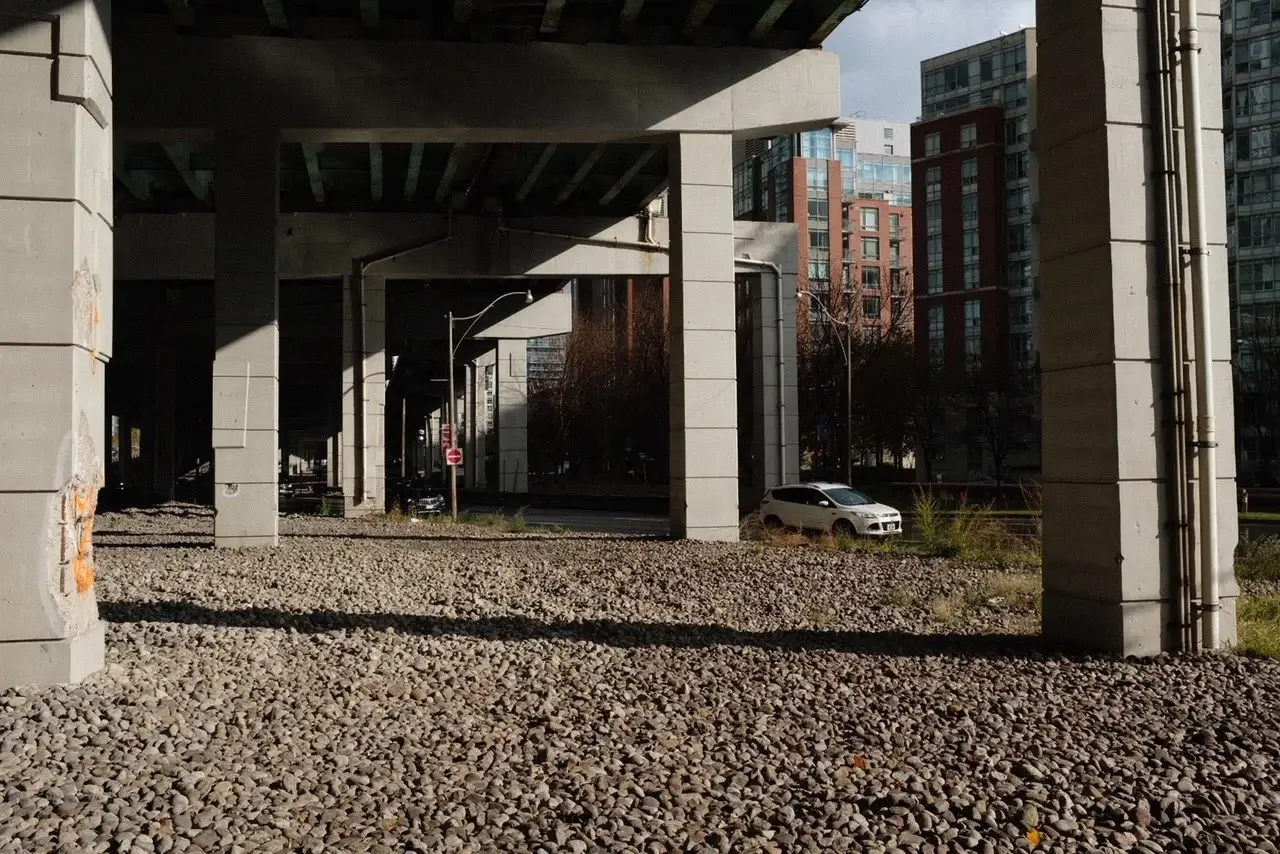
The Bentway, in addition to its programming and opportunities for active and passive recreation, is a notable example of public space-as-great connector in that it fuses together a disparate patchwork of neighborhoods, including the glass tower–studded residential enclaves of CityPlace and the massive Liberty Village, while serving as a portal to the Toronto’s rapidly transforming waterfront. (The Phase 1 site is about a 20-minute walk north of the beloved-but-fading Ontario Place, slated for a divisive forthcoming revamp.)
“The sheer density of people living in the downtown core is still one of the lowest areas in terms of parkland square footage per person anywhere in the city,” explained Ilana Altman, a cultural planner and designer who serves as coexecutive director of The Bentway. “There is a real need to think beyond the singular destination-based park and more about a connected networked approach to public spaces that can serve us in a number of different ways.”
The first completed phase of The Bentway adjacent to Fort York was facilitated by a catalytic $25 million gift bestowed by philanthropists Judy and Wilmot Matthews to the City of Toronto in 2015; local urban design and landscape architecture practice PUBLIC WORK and Ken Greenberg’s Greenberg Consultants led the charge on the design and planning fronts on what was then known as Project Under Gardiner in collaboration with Waterfront Toronto, the private-public entity that helms the city’s various lakeside revitalization projects.
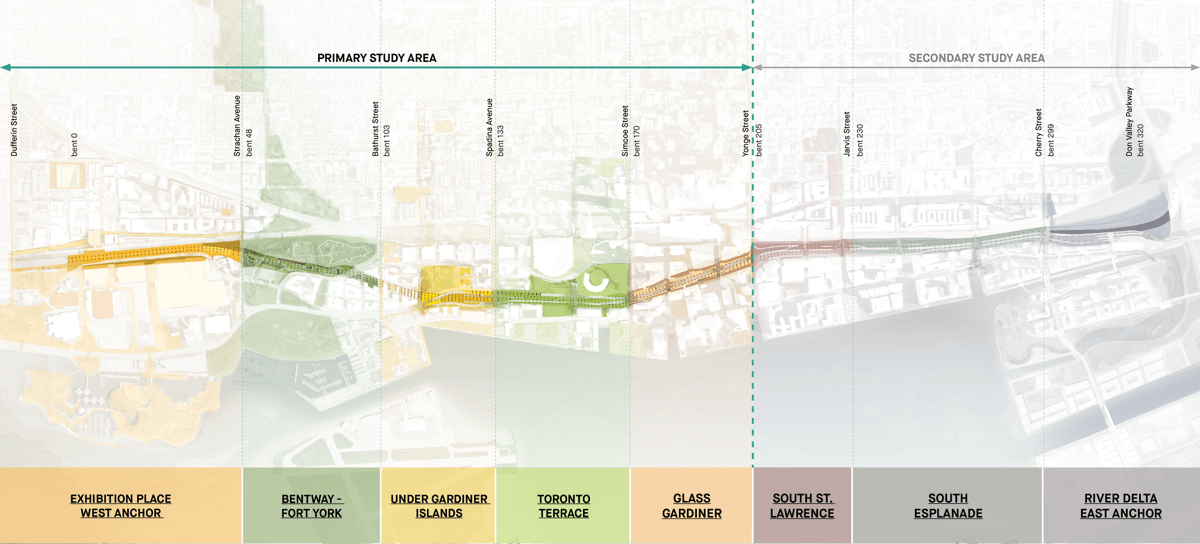
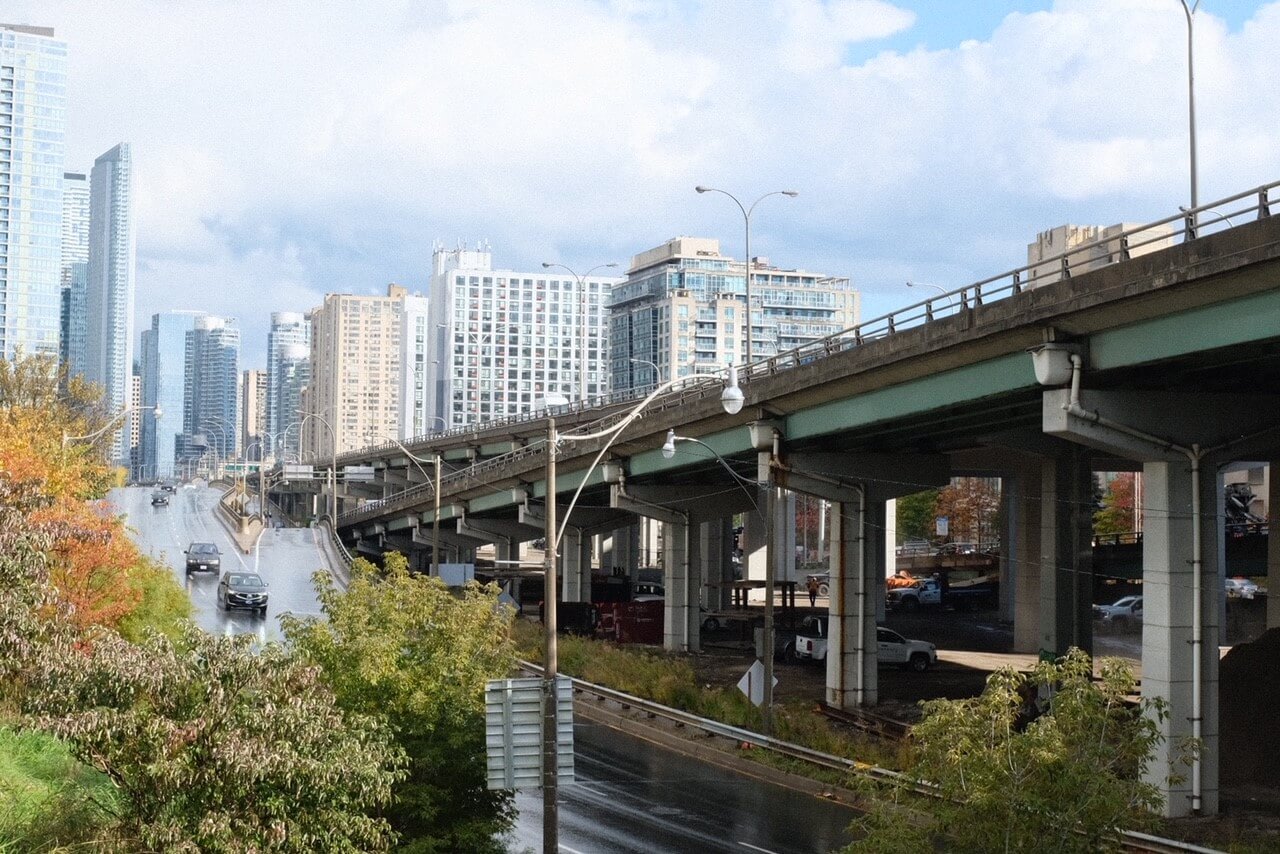
In addition to plotting programming opportunities at the Fort York–adjacent park site and at other locales including near its organizational headquarters and community hub (a.k.a Bentway Studio) at Canoe Landing Campus, The Bentway team is busy envisioning how it can unlock the potential of additional overlooked nether-spaces along a designated length of the Gardiner as part of future phases. This effort, known as the Under Gardiner Public Realm Plan (PRP), is unfolding in a deliberate, albeit patchwork-like manner as the scope of what The Bentway and its partners can do and where is largely dictated by ongoing rehabilitation work on the expressway.
The second public consultation phase for the PRP is set to kick off in November when The Bentway shares five preliminary design recommendations for five distinct zones—Exhibition Place West Anchor, Bentway–Fort York, Under Gardiner Islands, Toronto Terrace, and Glass Gardiner—within the Primary Study Area. Consultants for the PRP include PUBLIC Work, joined by Two Row Architect, Transsolar KlimaEngineering, and Third Party Public.
Sam Carter-Shamai, an urban planner and Corridor Plan Lead with The Bentway, described what’s been proposed for the Under Gardiner Islands study area stretching from Bathurst Street and Spadina Avenue as a “stitching of the city fabric with the lakefront.” Biodiversity-bolstering pocket parks located under sections of the Gardiner would serve as “stepping stones” to the shoreline—green gateways, essentially, leading down to a swath of Toronto waterfront long severed from the rest of the city by the expressway and a tangle of roads beneath it.
Going with the flow
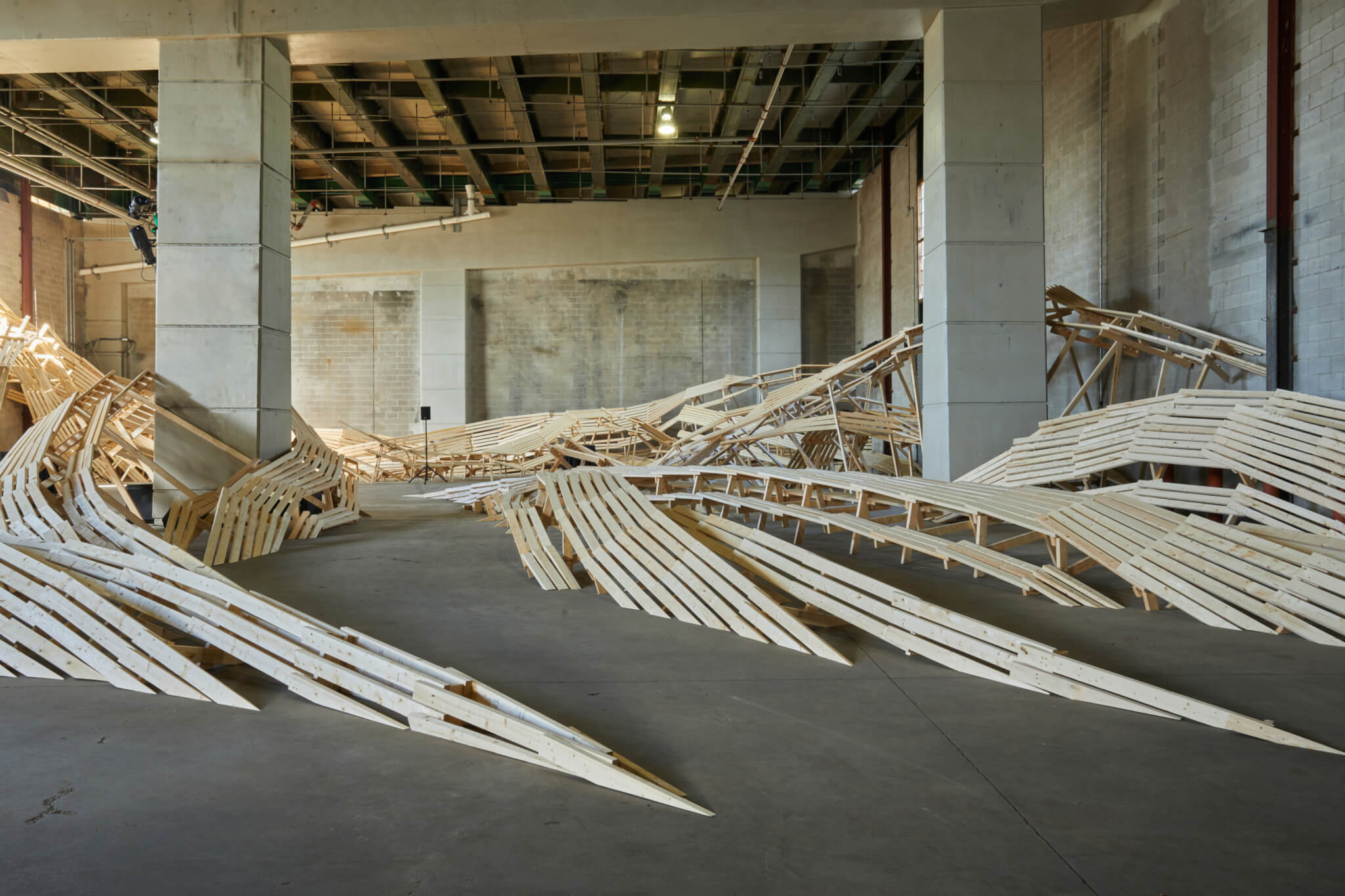
Back at the existing stretch of The Bentway opposite Fort York, Altman told AN that programming at that site as well as at Bentway Studio and elsewhere was developed to be “both of and about the city, where the city is both our site and our subject.”
“We work on a three-season basis across the year and each of those seasons is governed by questions about the role of public space and the city’s future,” said Altman, a Toronto native who came to The Bentway following a stint as project manager and designer at KPMB Architects. Before that, Altman served similar roles at Diller Scofidio + Renfro during a high-profile era for the New York–based firm as it was unveiling the first three phases of The High Line. In the spring of 2019, Altman, then program manager of the nascent public space project, was named co-executive director alongside Dave Carey, a longtime fundraising and public affairs specialist with the Toronto International Film Festival who served as The Bentway’s Director of Development at launch.
Per Altman, the summer 2022 season at The Bentway, entitled STREET, was developed as a response to both the planning work underway at the Gardiner and to “what we saw during COVID, where the street became a site for civic life and a very necessary amenity for commercial and cultural activities.”
STREET closed in late August when one of its marquee art installations, Lien’s PARADE, came down; Ogimaa Mikana Project’s Weweni Bizindan (Listen Carefully), meanwhile, will remain on view until October 25. Now, for the second consecutive year, The Bentway is heading indoors with the unveiling of its fall art commission: a large-scale sculptural installation designed by Striped Canary, a Portland, Maine–based collaborate art practice comprised of Stephen B. Nguyen and Wade Kavanaugh. The immersive indoor work, which features undulated picnic table “waves” accompanied by a soundscape composed by Toronto artist Anne Bourne, is inspired by the ancient water systems, both lost and buried, that have shaped the topography of the area around Fort York, a site that Altman described as being “really like a confluence with so many different histories and communities at play.”
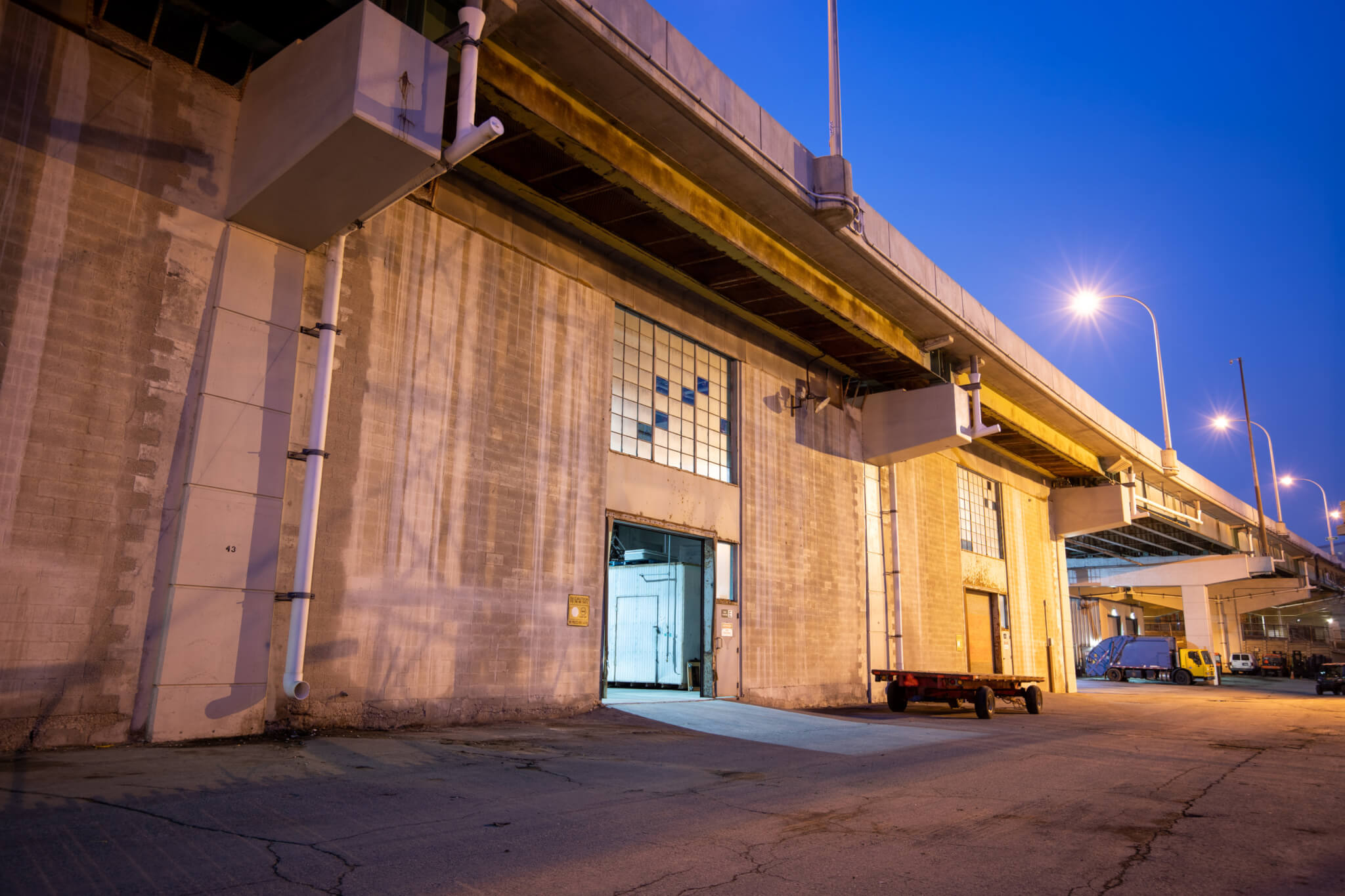
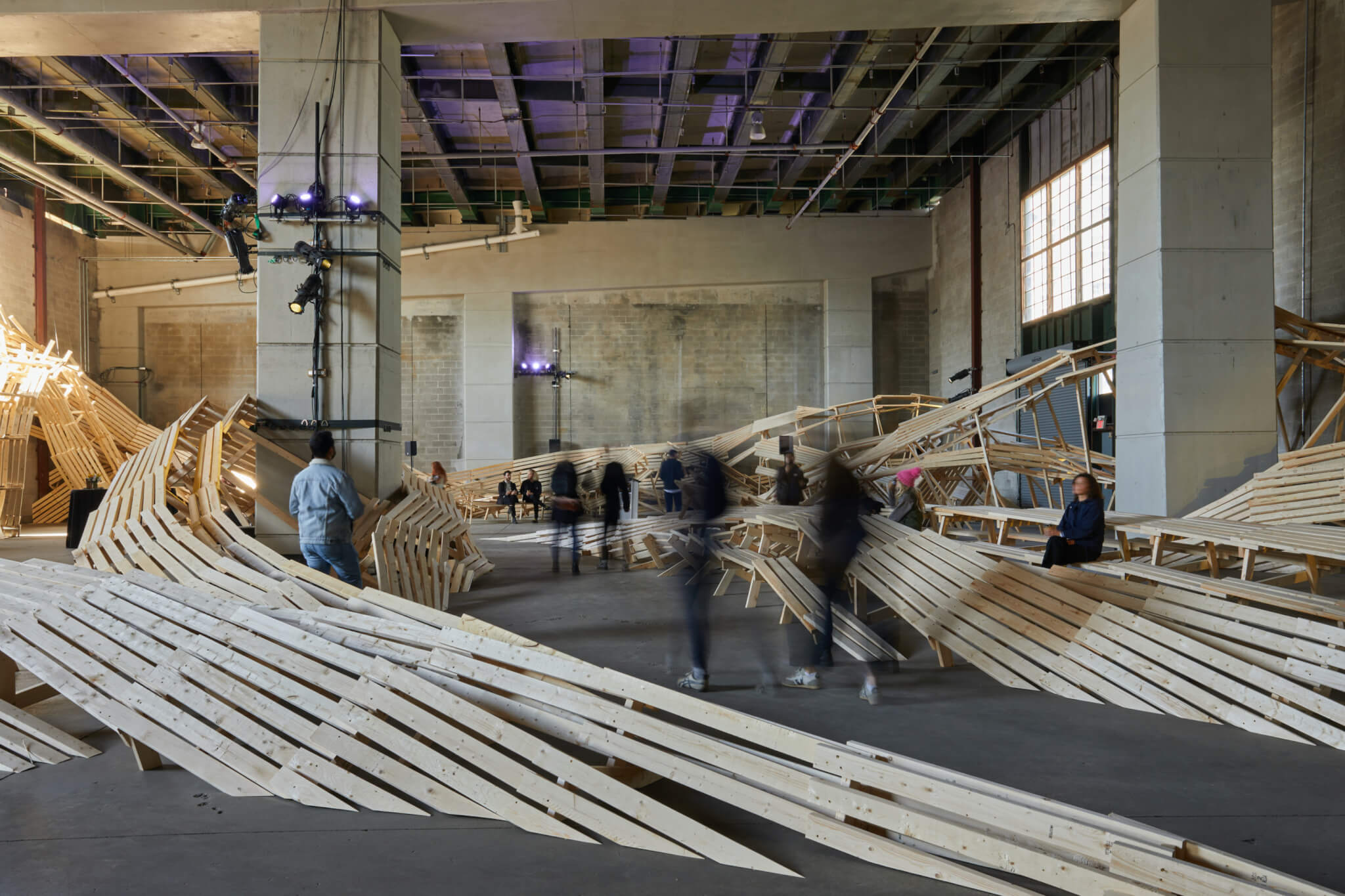
The new installation, appropriately dubbed Confluence, opened to the public this past weekend and is on view through the end of October.
While technically located under the Gardiner, Confluence is staged entirely within the so-called Cubicles, a series of cavernous, enclosed chambers tucked directly beneath the elevated roadway and used as a storage space for Exhibition Place. Encompassing nearly 200 acres near the Lake Ontario shoreline, the world’s fair-esque civic complex is home to a slew of venues including BMO Field, the Coliseum, the Enercare Centre, and a generous smattering of historic monuments and modernist exhibition halls. Exhibition Place and The Bentway first partnered last fall to stage Rafael Lozano-Hemmer’s Pulse Topology, a mesmeric light installation held at the Cubicles.
“Unlike some of our other public art presentations, which are very seasonally driven, the approach that we’ve taken from the Cubicles has really been driven by the space itself,” Altman explained. “We’ve been really clear that the objective here is to work with artists and collaborators who can strike a dialogue with the space, and the work can highlight the various aspects of the architecture—its industrial nature, the quality of the light in this space, and the incredible soundscape the Gardiner produces.”
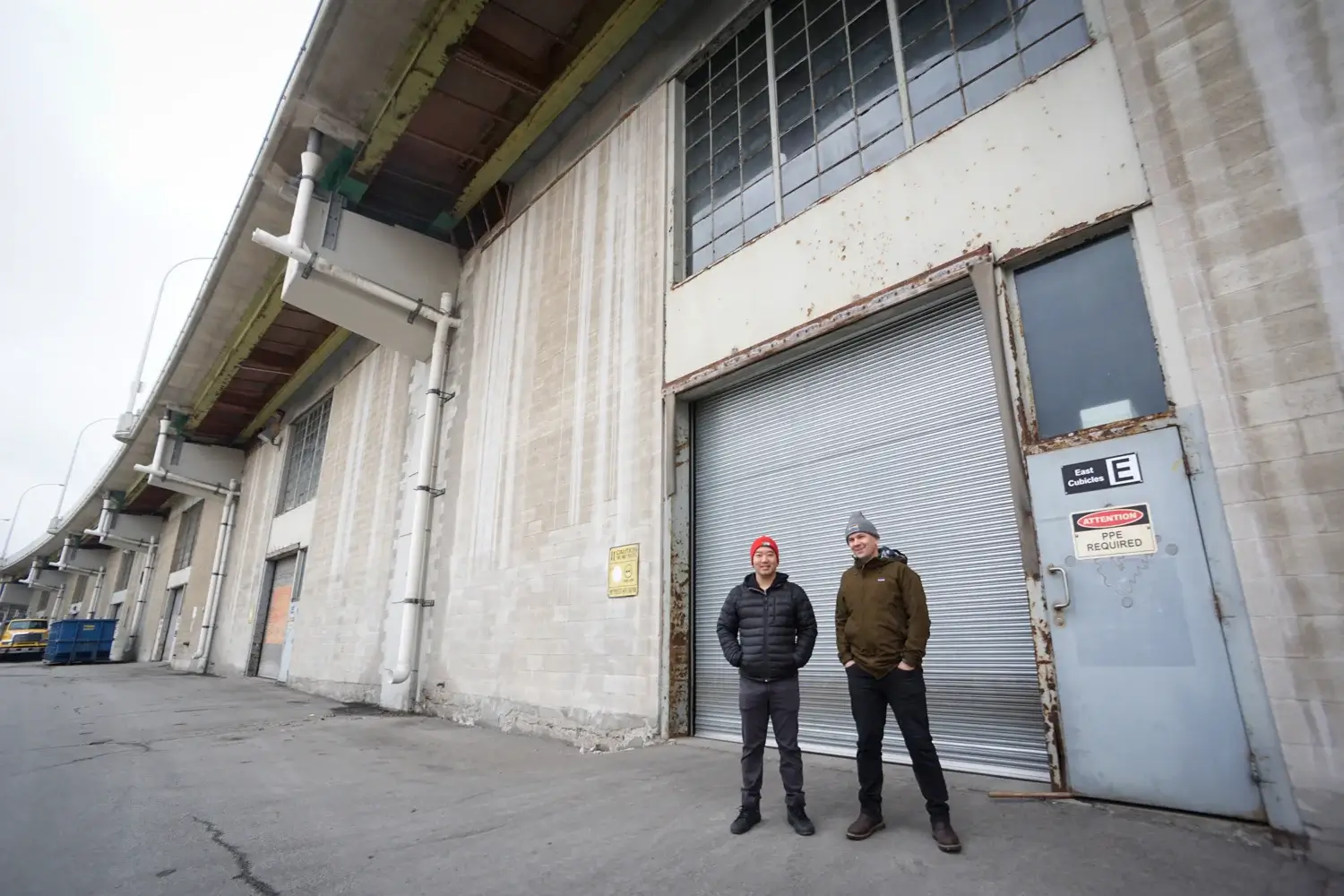
In an attempt to move away from the canopy-focused Pulse Topology, a commission Altman described as one that opened the organization’s eyes as to what was possible within the space, The Bentway and its Arts Advisory Committee compiled a shortlist of international firms and artists that they believed could create a work that responded to the unique enclosed site in a wholly new way.
“I think we were really struck by the ways in which Striped Canary works with ephemeral materials like paper and wood to create new landscapes that are really responding to the relationship between manmade environments, industrial environments, and natural features,” Altman said. “These projects often weave those various forces together to create new experiences. For us, that felt very appropriate given the ways in which this area Toronto has developed over time, and what we’re hoping will ultimately be the further development of the public realm underneath the Gardiner.”
“What excites me so much about Striped Canary’s work with Confluence is that it’s particularly emblematic of the approach that we’re trying to take—inserting the creative power of public art at the very early stages of an urban transformation project,” Carey added. “What we’re doing with our Phase 1 site is using the space as a canvas and a place to have urban conversations. But we think that undeveloped and underdeveloped sections of the Gardiner or to the east and west of us also deserve that conversation at the very early stages. I think the idea of a public art project as a momentum-builder, a possibility-unlocker, and as a demonstrator is something that we’re going to continue to lean into as we look at the expressway as a whole.”
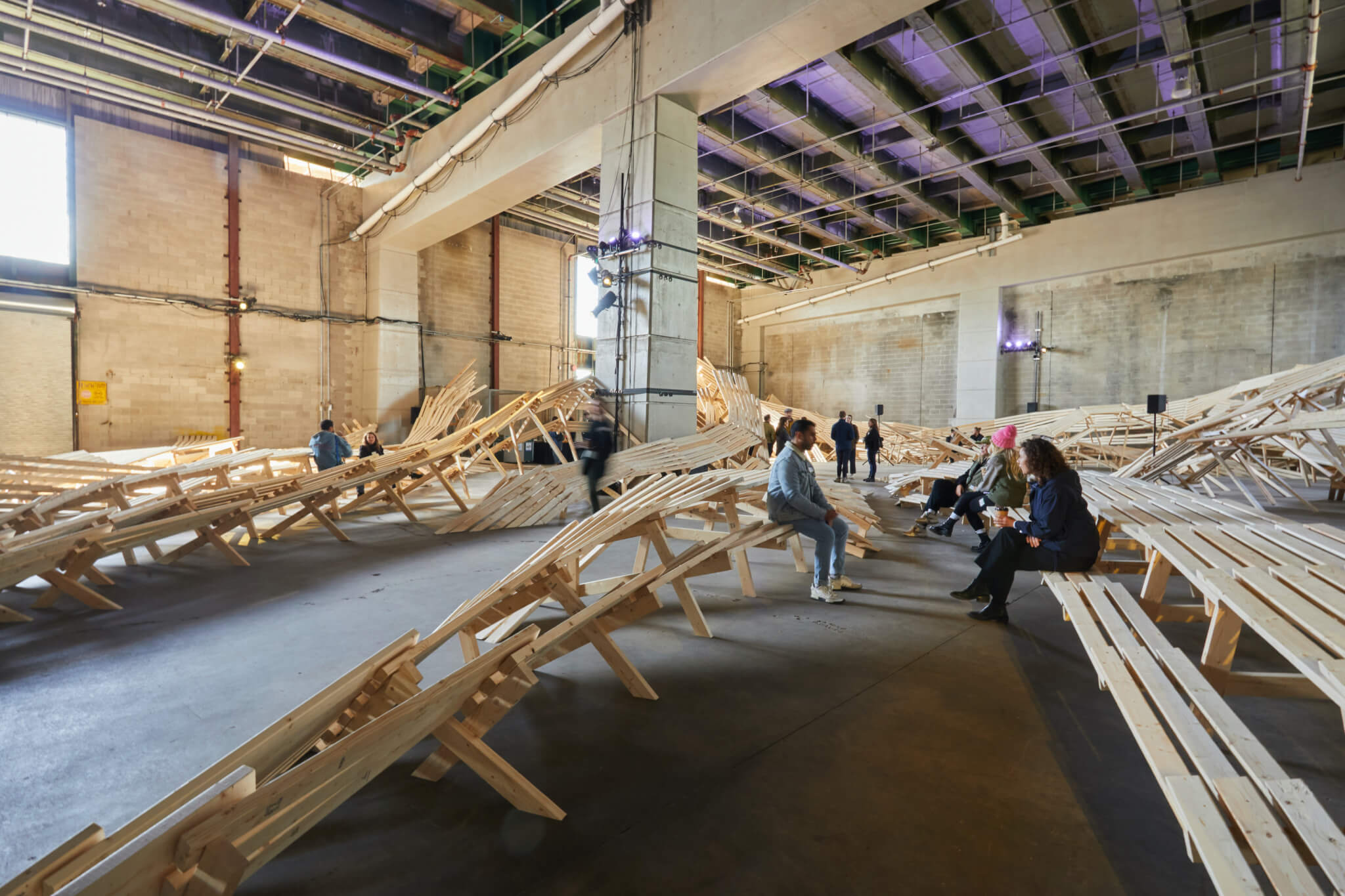
Confluence’s role as a momentum-builder for the larger ambitions of The Bentway is largely focused on the forthcoming Phase 2 expansion directly to the east of the existing park site, including the future construction of the aforementioned pedestrian bridge at Fort York Boulevard. In a previous iteration, the bridge was envisioned as a cross-laminated timber construction suspended from the underside of the Gardiner. Due to myriad factors, the proposed crossing has now taken on a landform-based design that’s highest point will serve as a perch looking down the length of the expressway.
“What I’m always sort of encouraged and excited by are these moments where we get to sort of blur the lines between our artistic interventions and these sort of policy investigations as well,” said Carter-Shamai. “When it comes down to it, why is it that the line between these things even exists at all?
Confluence by Striped Canary is on view Wednesdays through Sundays through October 30 under the Gardiner Expressway at Exhibition Place. Timed ticketing information and directions to the exhibition site can be found here. Tickets are pay-what-you-can with a suggested donation of $5 and no minimum contribution.







